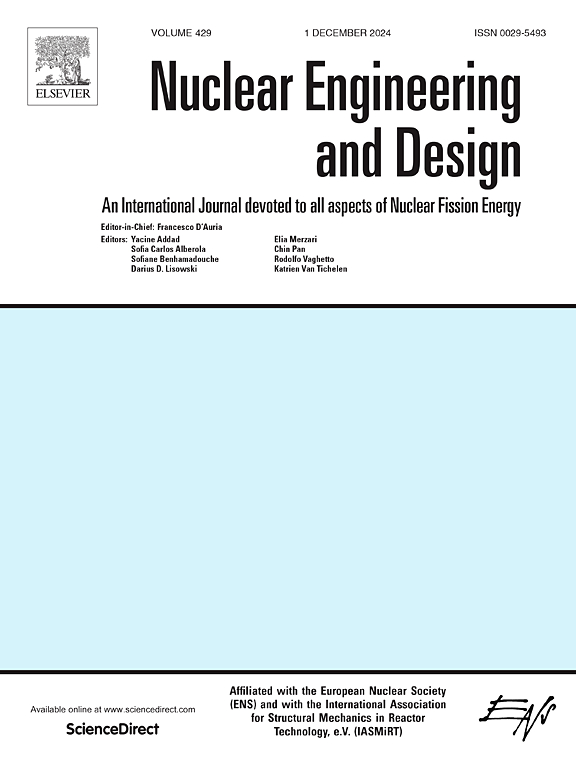Development and application of two-step uncertainty propagation and sensitivity analysis methodology for fast reactor safety analysis
IF 1.9
3区 工程技术
Q1 NUCLEAR SCIENCE & TECHNOLOGY
引用次数: 0
Abstract
Uncertainty quantification (UQ) in nuclear reactors for transients is directly linked with safety assessment through the cross-sections uncertainties, provided as a covariance matrix, which are propagated through the reactor system to output of interest pertaining to reactor safety, such as peak temperatures in fuel/clad/coolant. Using a two-step approach, uncertainties are first quantified and propagated from basic input variables (such as reaction cross-sections) to intermediate quantities (such as reactivity feedback coefficients) through lattice level calculations. Uncertainties of intermediate quantities (from the first step) are then propagated through the system transient calculations, in the second step, to obtain uncertainties on reactor safety output parameters of interest. The scope of this work consists of Uncertainty Quantification & Propagation of nuclear data uncertainties that are highly correlated through unprotected transient overpower and unprotected loss of flow to assess their impact on core safety parameters. This two-step approach in the presence of covariance renders the sensitivity analysis very challenging. In fact, usually the sensitivity analysis is restricted to each step, which limits its application since the sensitivities between the system output quantities and the basic input variables are difficult to obtain. In this work, we address this issue by proposing a simple, general methodology to combine the sensitivity indices obtained in each step by assuming the model behavior being linear. For the first step Generalized Perturbation theory based indices are used while in the second step the recently studied Johnson indices.
The uncertainty quantification and sensitivity methodologies discussed here are demonstrated on a generic LFR design which is based on the 500 MWth demonstration Lead-cooled fast reactor (DLFR) using oxide fuel, developed by Westinghouse Electric Company (WEC).
求助全文
约1分钟内获得全文
求助全文
来源期刊

Nuclear Engineering and Design
工程技术-核科学技术
CiteScore
3.40
自引率
11.80%
发文量
377
审稿时长
5 months
期刊介绍:
Nuclear Engineering and Design covers the wide range of disciplines involved in the engineering, design, safety and construction of nuclear fission reactors. The Editors welcome papers both on applied and innovative aspects and developments in nuclear science and technology.
Fundamentals of Reactor Design include:
• Thermal-Hydraulics and Core Physics
• Safety Analysis, Risk Assessment (PSA)
• Structural and Mechanical Engineering
• Materials Science
• Fuel Behavior and Design
• Structural Plant Design
• Engineering of Reactor Components
• Experiments
Aspects beyond fundamentals of Reactor Design covered:
• Accident Mitigation Measures
• Reactor Control Systems
• Licensing Issues
• Safeguard Engineering
• Economy of Plants
• Reprocessing / Waste Disposal
• Applications of Nuclear Energy
• Maintenance
• Decommissioning
Papers on new reactor ideas and developments (Generation IV reactors) such as inherently safe modular HTRs, High Performance LWRs/HWRs and LMFBs/GFR will be considered; Actinide Burners, Accelerator Driven Systems, Energy Amplifiers and other special designs of power and research reactors and their applications are also encouraged.
 求助内容:
求助内容: 应助结果提醒方式:
应助结果提醒方式:


